Abstract
We used DNA-DNA hybridization to characterize a mycobacterial isolate, strain Linda, that was obtained from a patient with Crohn's disease and that has been reported to cause ileitis in experimental animals. We also investigated the association of this mycobacterium with Crohn's disease. Our results identified Mycobacterium strain Linda as a strain of Mycobacterium paratuberculosis, the etiologic agent of Johne's disease, a disease of ruminants that has some superficial resemblance to Crohn's disease. Sequences that hybridized with strain Linda DNA probes were detected in DNA extracted from human intestinal tissues from patients with Crohn's disease, ulcerative colitis, and noninflammatory bowel disease. These hybridizing DNA sequences were more prevalent in the muscle layers than in the intestinal mucosa, making it unlikely that they represented DNA from bacterial contaminants in the intestinal lumen. Measurement of the melting temperatures of the DNA-DNA hybrids formed between strain Linda probes and tissue DNAs indicated that the related sequences detected were of mycobacterial origin but were not identical to each other or to strain Linda DNA. These results do not support the proposed specific relationship between Mycobacterium strain Linda and Crohn's disease. The possible etiologic role of mycobacteria in Crohn's disease is discussed.
Full text
PDF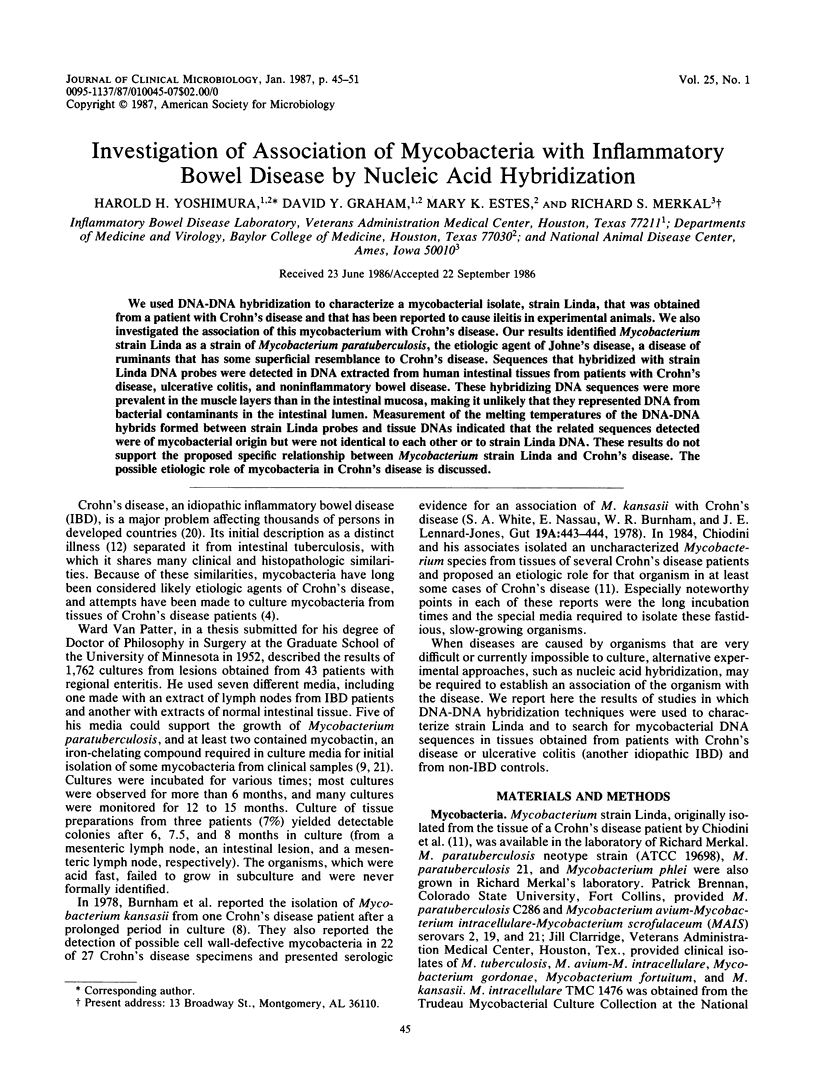
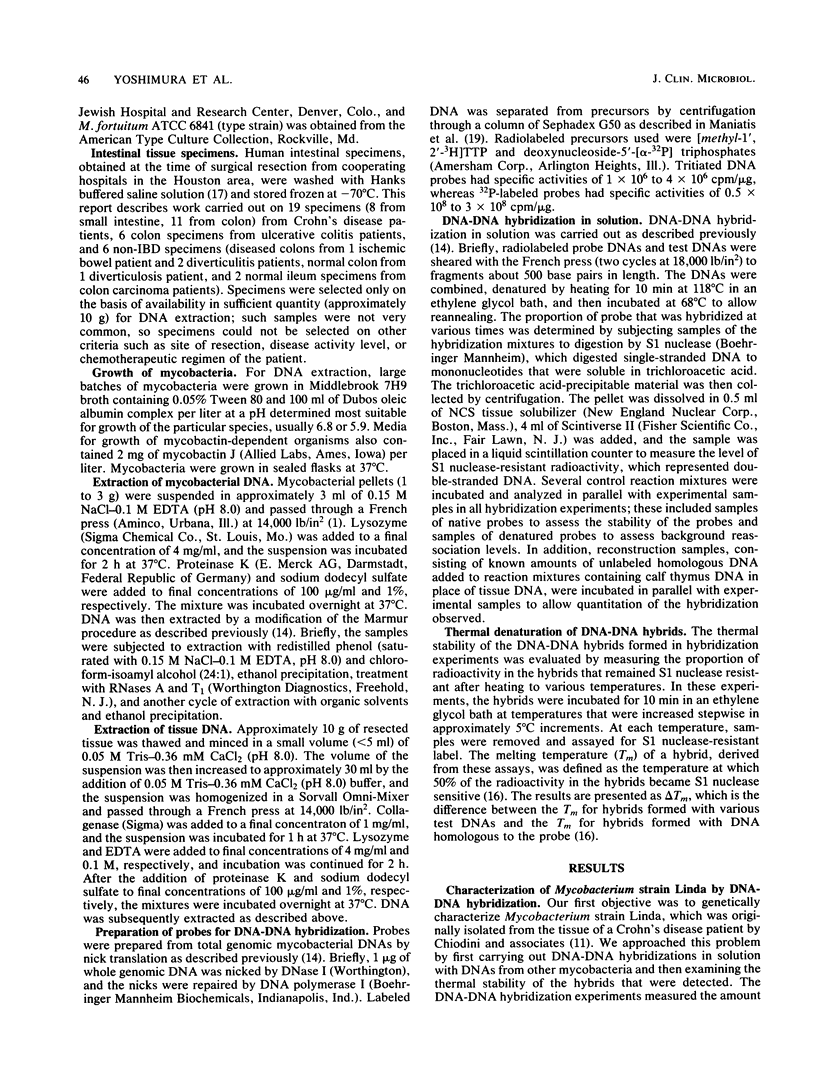
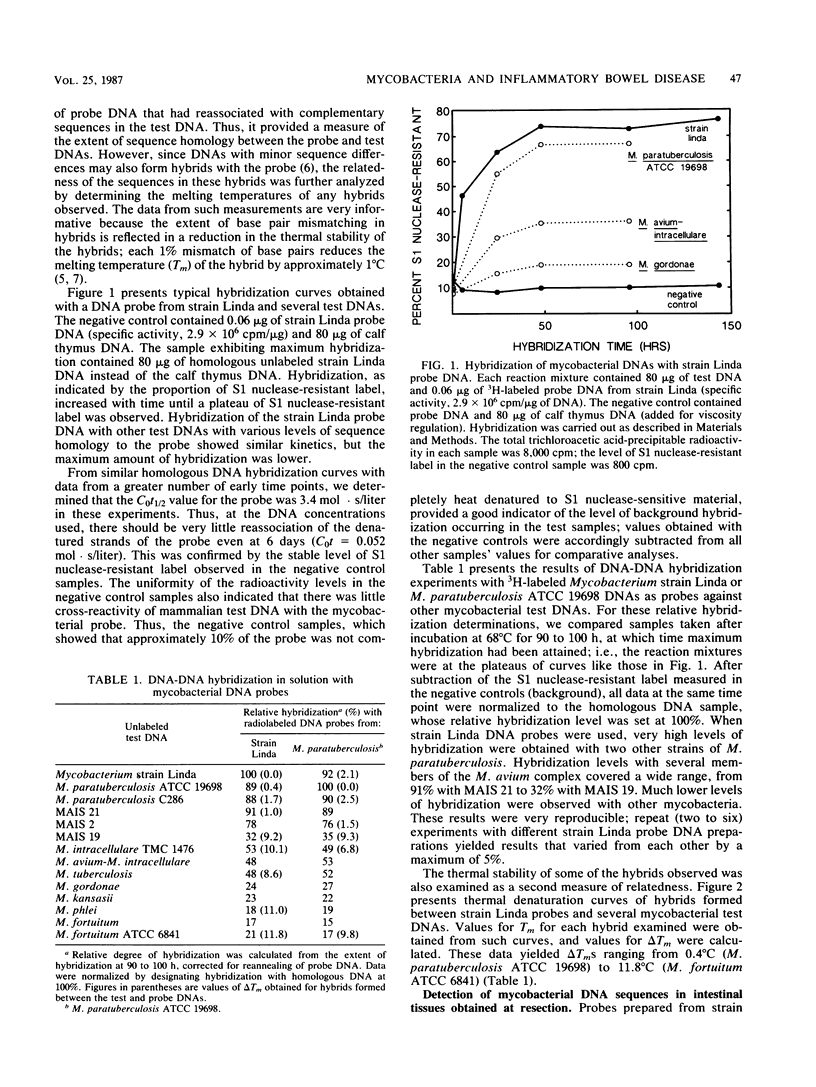
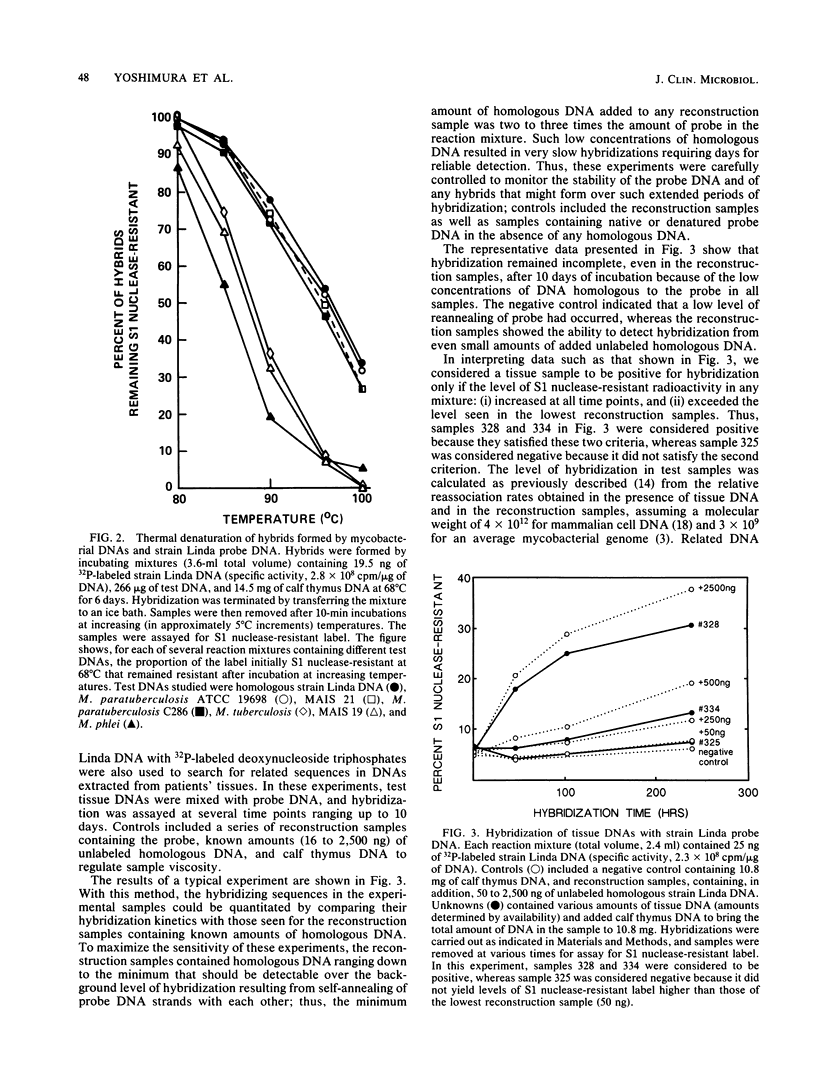
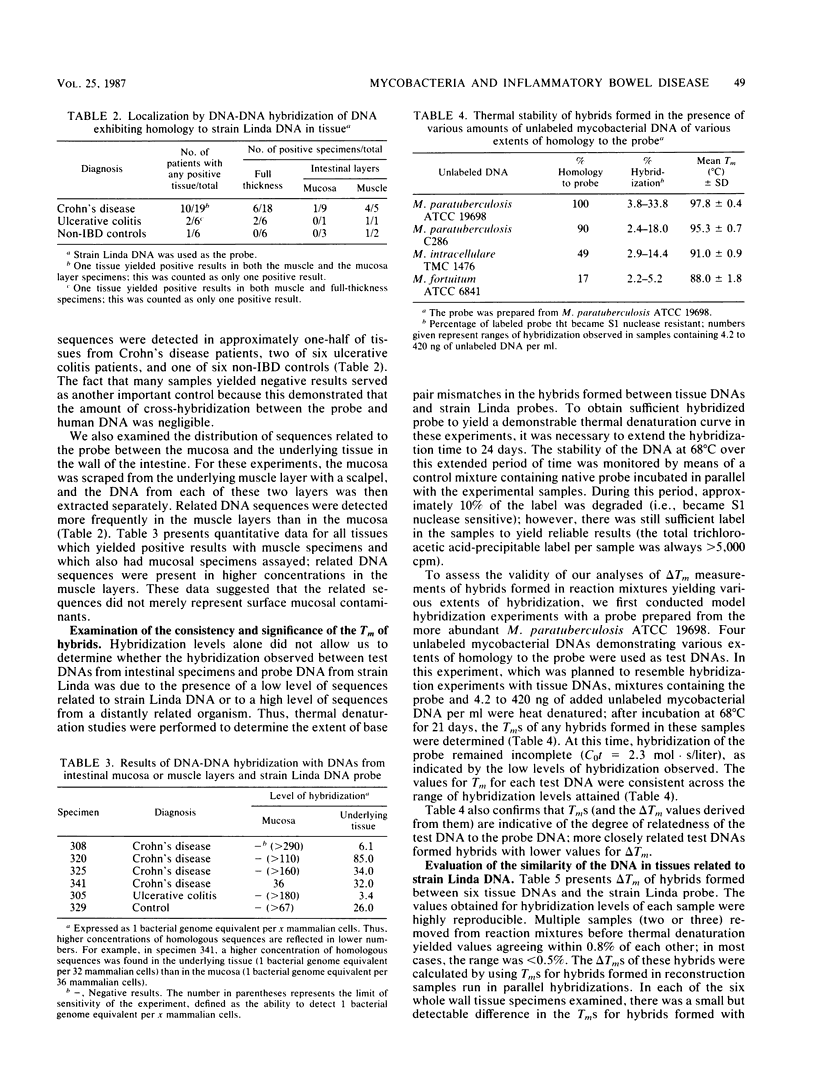
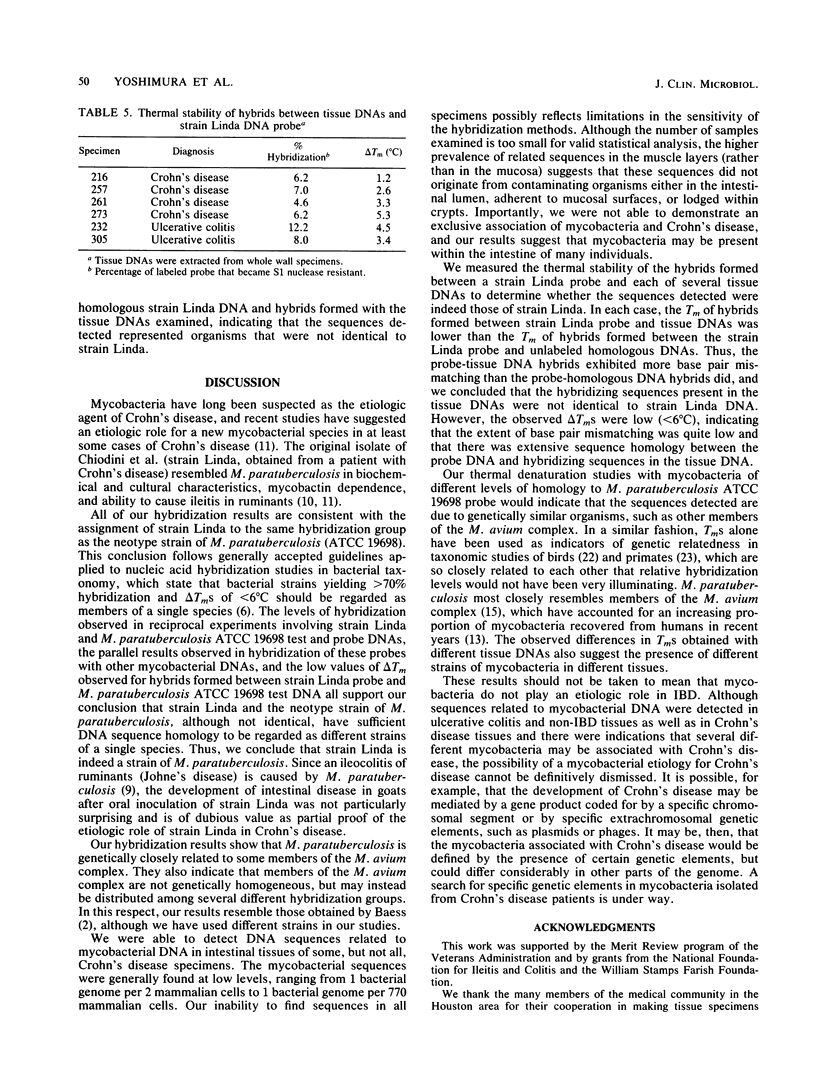
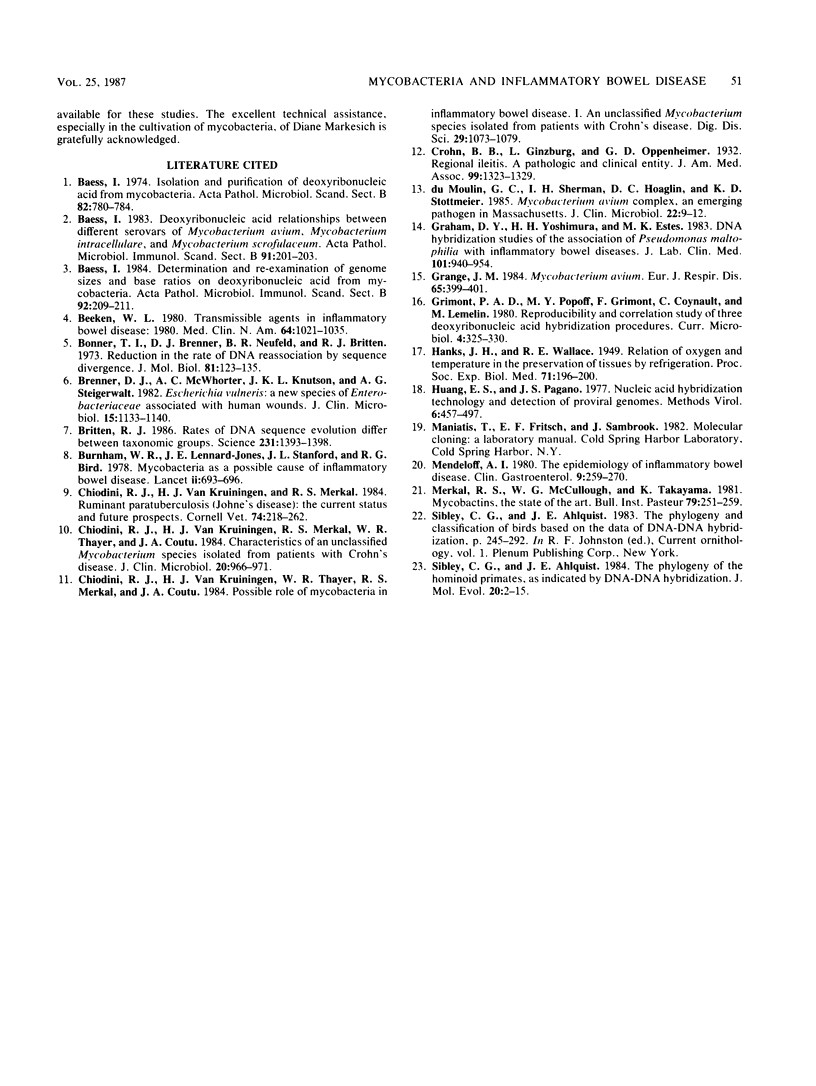
Selected References
These references are in PubMed. This may not be the complete list of references from this article.
- Baess I. Deoxyribonucleic acid relationships between different serovars of Mycobacterium avium, Mycobacterium intracellulare and Mycobacterium scrofulaceum. Acta Pathol Microbiol Immunol Scand B. 1983 Jun;91(3):201–203. doi: 10.1111/j.1699-0463.1983.tb00033.x. [DOI] [PubMed] [Google Scholar]
- Baess I. Determination and re-examination of genome sizes and base ratios on deoxyribonucleic acid from mycobacteria. Acta Pathol Microbiol Immunol Scand B. 1984 Aug;92(4):209–211. doi: 10.1111/j.1699-0463.1984.tb02822.x. [DOI] [PubMed] [Google Scholar]
- Baess I. Isolation and purification of deoxyribonucleic acid from mycobacteria. Acta Pathol Microbiol Scand B Microbiol Immunol. 1974 Dec;82(6):780–784. doi: 10.1111/j.1699-0463.1974.tb02375.x. [DOI] [PubMed] [Google Scholar]
- Beeken W. L. Transmissible agents in inflammatory bowel disease: 1980. Med Clin North Am. 1980 Nov;64(6):1021–1035. doi: 10.1016/s0025-7125(16)31554-1. [DOI] [PubMed] [Google Scholar]
- Bonner T. I., Brenner D. J., Neufeld B. R., Britten R. J. Reduction in the rate of DNA reassociation by sequence divergence. J Mol Biol. 1973 Dec 5;81(2):123–135. doi: 10.1016/0022-2836(73)90184-8. [DOI] [PubMed] [Google Scholar]
- Brenner D. J., McWhorter A. C., Knutson J. K., Steigerwalt A. G. Escherichia vulneris: a new species of Enterobacteriaceae associated with human wounds. J Clin Microbiol. 1982 Jun;15(6):1133–1140. doi: 10.1128/jcm.15.6.1133-1140.1982. [DOI] [PMC free article] [PubMed] [Google Scholar]
- Britten R. J. Rates of DNA sequence evolution differ between taxonomic groups. Science. 1986 Mar 21;231(4744):1393–1398. doi: 10.1126/science.3082006. [DOI] [PubMed] [Google Scholar]
- Burnham W. R., Lennard-Jones J. E., Stanford J. L., Bird R. G. Mycobacteria as a possible cause of inflammatory bowel disease. Lancet. 1978 Sep 30;2(8092 Pt 1):693–696. doi: 10.1016/s0140-6736(78)92699-5. [DOI] [PubMed] [Google Scholar]
- Chiodini R. J., Van Kruiningen H. J., Merkal R. S. Ruminant paratuberculosis (Johne's disease): the current status and future prospects. Cornell Vet. 1984 Jul;74(3):218–262. [PubMed] [Google Scholar]
- Chiodini R. J., Van Kruiningen H. J., Merkal R. S., Thayer W. R., Jr, Coutu J. A. Characteristics of an unclassified Mycobacterium species isolated from patients with Crohn's disease. J Clin Microbiol. 1984 Nov;20(5):966–971. doi: 10.1128/jcm.20.5.966-971.1984. [DOI] [PMC free article] [PubMed] [Google Scholar]
- Chiodini R. J., Van Kruiningen H. J., Thayer W. R., Merkal R. S., Coutu J. A. Possible role of mycobacteria in inflammatory bowel disease. I. An unclassified Mycobacterium species isolated from patients with Crohn's disease. Dig Dis Sci. 1984 Dec;29(12):1073–1079. doi: 10.1007/BF01317078. [DOI] [PubMed] [Google Scholar]
- Graham D. Y., Yoshimura H. H., Estes M. K. DNA hybridization studies of the association of Pseudomonas maltophilia with inflammatory bowel diseases. J Lab Clin Med. 1983 Jun;101(6):940–954. [PubMed] [Google Scholar]
- Grange J. M. Mycobacterium avium. Eur J Respir Dis. 1984 Aug;65(6):399–401. [PubMed] [Google Scholar]
- Mendeloff A. I. The epidemiology of inflammatory bowel disease. Clin Gastroenterol. 1980 May;9(2):259–270. [PubMed] [Google Scholar]
- Sibley C. G., Ahlquist J. E. The phylogeny of the hominoid primates, as indicated by DNA-DNA hybridization. J Mol Evol. 1984;20(1):2–15. doi: 10.1007/BF02101980. [DOI] [PubMed] [Google Scholar]
- du Moulin G. C., Sherman I. H., Hoaglin D. C., Stottmeier K. D. Mycobacterium avium complex, an emerging pathogen in Massachusetts. J Clin Microbiol. 1985 Jul;22(1):9–12. doi: 10.1128/jcm.22.1.9-12.1985. [DOI] [PMC free article] [PubMed] [Google Scholar]


